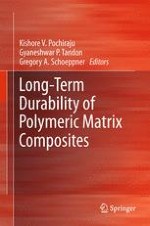2012 | OriginalPaper | Buchkapitel
7. Physical Aging in Glasses and Composites
verfasst von : Gregory B. McKenna
Erschienen in: Long-Term Durability of Polymeric Matrix Composites
Verlag: Springer US
Aktivieren Sie unsere intelligente Suche, um passende Fachinhalte oder Patente zu finden.
Wählen Sie Textabschnitte aus um mit Künstlicher Intelligenz passenden Patente zu finden. powered by
Markieren Sie Textabschnitte, um KI-gestützt weitere passende Inhalte zu finden. powered by
